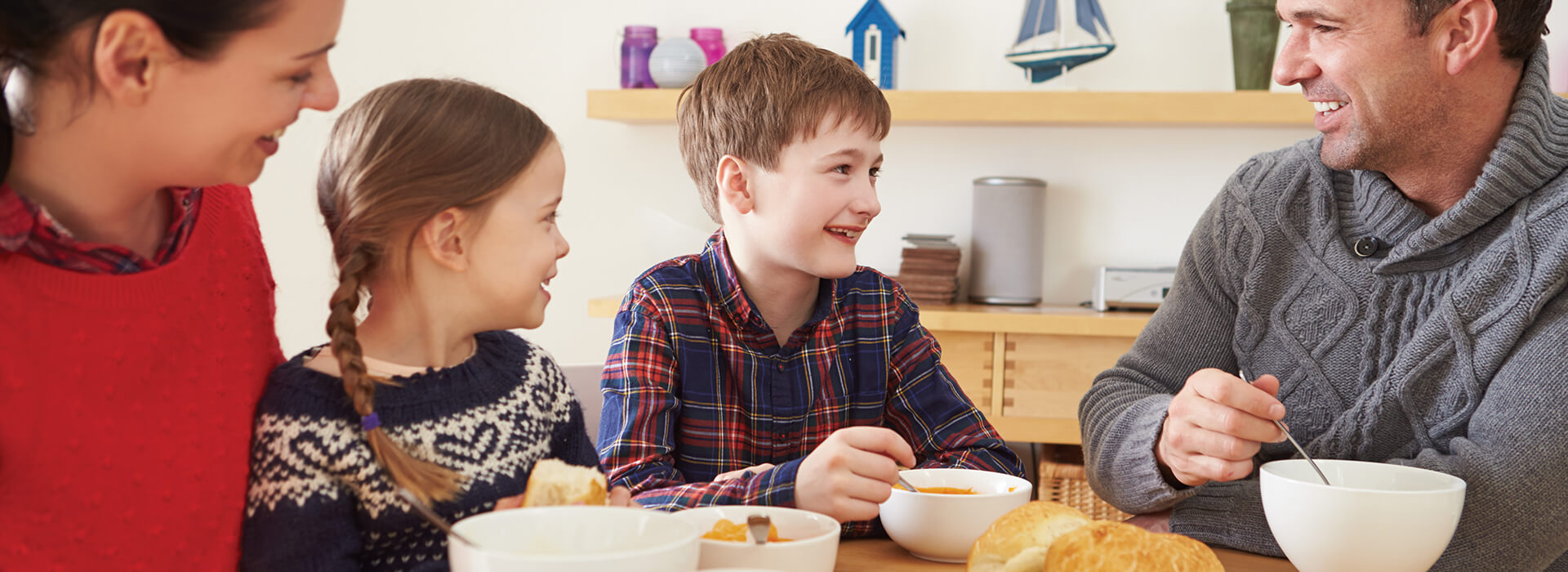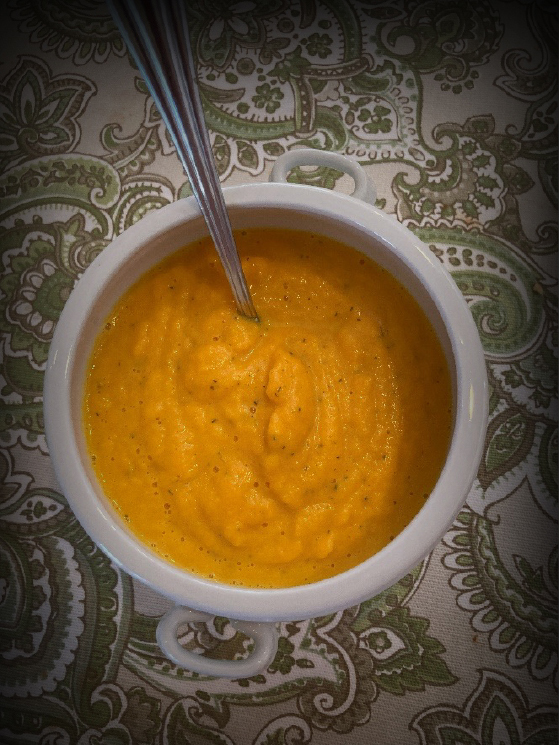
Sopa Bugs Bunny
Bridget Swinney MS, RDN, LD
- Home
- Live Well Blog
- Sopa Bugs Bunny
Bridget Swinney MS, RDN, LD
¡Esta sopa cremosa es para todos los conejitos traviesos de tu hogar! Es un comienzo perfecto para una comida familiar saludable e ideal para quienes no siempre disfrutan la textura de las verduras.
Las zanahorias en esta receta son ricas en vitamina A, fundamentales para un sistema inmunológico saludable, la visión y el cuidado de la piel. Las zanahorias también contienen luteína y zeaxantina, antioxidantes esenciales para el desarrollo ocular y cerebral del bebé durante el embarazo y en los primeros años de vida. La luteína, la zeaxantina y otros carotenoides también se encuentran en la leche materna, dependiendo de la cantidad presente en la dieta de la madre.
100 % de la cantidad diaria recomendada (CDR) de vitamina A para niños de hasta 13 años.
86 % de la CDR de vitamina A para niños de hasta 14 años.
Ingredientes:
- 1 cucharada de aceite (los aceites de canola, oliva o aguacate son los más recomendables)
- ½ cebolla mediana picada (aproximadamente 1 taza)
- 3 tallos de apio, deshebrados y cortados (1 taza colmada)
- 1 libra (500 g) de zanahorias peladas y cortadas o zanahorias babé (aproximadamente 4 tazas)
- 1 ½ tazas de agua
- 2 cucharaditas de caldo de pollo granulado (o base de pollo)
- ½ cucharadita de eneldo
- 2 tazas de leche (de cualquier tipo)
- Pimienta al gusto
- Crema agria o yogur natural (opcional)

Instrucciones:
- Calienta el aceite en una cacerola mediana a fuego medio. Agrega la cebolla y el apio, y cocina hasta que estén casi transparentes.
- Agrega agua, mezcla de caldo y eneldo. Revuelve hasta que la mezcla de caldo esté disuelta.
- Agrega las zanahorias. Cubre y cocina a fuego lento hasta que las zanahorias estén tiernas al pincharlas con un tenedor, revolviendo ocasionalmente. (10 a 15 minutos)
- Retira la preparación del fuego. Vierte la mezcla en la licuadora con la leche, mezcla a velocidad baja y luego a velocidad media-alta hasta obtener una consistencia suave.
- Añade pimienta al gusto. Como el caldo contiene sodio, no es necesario agregar más sal.
- ¡Agrega una cucharada de yogur natural o crema agria por encima al servir para hacerla aún más cremosa!
Cuanto más delgadas cortes las zanahorias, más rápido se cocinarán.
Si deseas una sopa más espesa, agrega un poco menos de leche al mezclar.
REFERENCIAS:
National Institutes of Health. Vitamin A and Carotenoids.
https://ods.od.nih.gov/factsheets/VitaminA-Consumer/
Giordano E, Quadro L. Lutein, zeaxanthin and mammalian development: Metabolism, functions and implications for health. Arch Biochem Biophys. 2018 Jun 1;647:33-40. doi: 10.1016/j.abb.2018.04.008. Epub 2018 Apr 11. PMID: 29654731; PMCID: PMC5949277.
https://www.ncbi.nlm.nih.gov/pmc/articles/PMC5949277/
FoodData Central. Carrots, baby, raw.
https://fdc.nal.usda.gov/fdc-app.html#/food-details/168568/nutrients
Zielinska MA, Hamulka J, Wesolowska A. Carotenoid Content in Breastmilk in the 3rd and 6th Month of Lactation and Its Associations with Maternal Dietary Intake and Anthropometric Characteristics. Nutrients. 2019 Jan 18;11(1):193. doi: 10.3390/nu11010193. PMID: 30669320; PMCID: PMC6356523.
https://www.ncbi.nlm.nih.gov/pmc/articles/PMC6356523/
Mahmassani HA, Switkowski KM, Scott TM, Johnson EJ, Rifas-Shiman SL, Oken E, Jacques PF. Maternal Intake of Lutein and Zeaxanthin during Pregnancy Is Positively Associated with Offspring Verbal Intelligence and Behavior Regulation in Mid-Childhood in the Project Viva Cohort. J Nutr. 2021 Mar 11;151(3):615-627. doi: 10.1093/jn/nxaa348. PMID: 33484136; PMCID: PMC7948203.
https://www.ncbi.nlm.nih.gov/pmc/articles/PMC7948203/
Mahmassani HA, Switkowski KM, Scott TM, Johnson EJ, Rifas-Shiman SL, Oken E, Jacques PF. Maternal diet quality during pregnancy and child cognition and behavior in a US cohort. Am J Clin Nutr. 2022 Jan 11;115(1):128-141. doi: 10.1093/ajcn/nqab325. PMID: 34562095; PMCID: PMC8755080.
https://www.ncbi.nlm.nih.gov/pmc/articles/pmid/34562095/